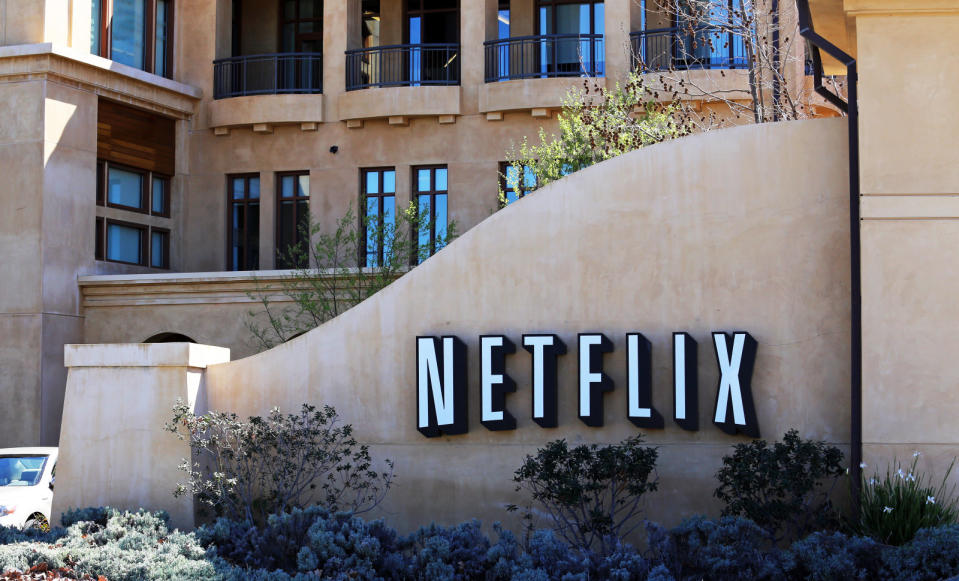Netflix’s pricier ‘Ultra’ tier is inevitable
More shows need more money, and Netflix is running out of people.
Netflix took Hollywood by storm with insights on customer data, bold decisions and a blank checkbook. But if the streaming service is going to spend as much as it does, it's either going to have to significantly grow its audience or find a way of making more money out of its existing customers. One way might be to get users to pay an additional €3 ($3.50) each month in order to view the streaming service's growing library of HDR content.
That's the pitch behind the Ultra pricing tier which is being trialed on selected users in Europe already. The company says that the new tier is a test to "understand how consumers value Netflix," but even if this is just a test, higher prices seem inevitable.
Ultra makes plenty of sense as a low-stakes way of juicing a couple of extra bucks out of its most devoted subscribers. After all, if you can afford a fancy-schmancy, 50-plus inch 4K HDR TV, then you probably aren't sweating roughly $20 (€16.99) month.
Squeezing more cash out of users is pretty important because Netflix doesn't have a deep-pocketed benefactor helping it achieve its goals. Instead, its growth has been fueled by a combination of its own cash and debt. Netflix has managed to ratchet up one hell of a debt in the last few years, especially to spend big on shows like House of Cards and Stranger Things. Not to mention that it paid around $130 million for Star Trek Discovery (the show's entire budget), even though it can't air it in the US.
Netflix has around $15.5 billion in liabilities, of which at least around $10 billion is for content. That's a sum that, Netflix hopes, it will be able to pay off in the future by ensuring that users keep subscribing to its service. So far, the gamble has worked, and the company keeps turning a profit, quarter-on-quarter.

The service now has around 125 million users (57 million in the US vs. 68 million globally), and it's not clear how many more are likely to sign on. With barriers to entry in China, Netflix is hoping to grow by embracing the Indian market, where 150 million people have access to broadband. But, like how the smartphone industry was banking on India to sell phones, it remains to be seen if locals will embrace Netflix.
Then, there are the rivals, including Amazon, which is retooling itself for a push toward the mainstream. CBS All Access, meanwhile, can leverage the bulk of the Viacom catalog for its own ends, including big-name CBS spinoff shows. Then there's Disney, which, if its purchase of Fox is successful, will wind up owning two major streaming services: Hulu and its own family-friendly platform, which is launching at the end of next year.
It's the latter that should make Netflix executives the most nervous because Disney has the money and the clout to make waves in the industry. CEO Bob Iger has said while the Disney service will be cheaper than Netflix, it will have only a quarter of the content of its major rival. But then, that is likely to include some or all of the Star Wars, Marvel and Pixar movies, making it an instant buy for pretty much everyone.
Of course, Netflix knew that rival companies like Disney and Fox would eventually take their content elsewhere. This is why it has spent big on building its own catalog of original series, including the era-defining Stranger Things. And it has worked hard to put out something for pretty much everyone including Orange Is the New Black, Dear White People and even, you know, Fuller House.
Netflix is still seen as a huge draw for some of the biggest names in the entertainment industry, many of whom value the freedom (and massive budgets) that Netflix can throw in their general direction. Brand-name producers like Ryan Murphy and Shonda Rhimes have already accepted bundles of money to make shows for Netflix, and it's rumored Black-ish creator Kenya Barris will be next. But who is bankrolling Netflix's shopping spree? Don't forget, that money is coming from us -- and the bond market -- and it will eventually need to be paid back.
What will happen if Netflix rolls out the Ultra tier out to all of its users? Right now, Netflix hasn't made much of a distinction between content that's available in 4K and those that are 4K + HDR. A handful of the company's original titles are available in 4K+HDR, including Okja, Chef's Table, GLOW and all of the Marvel series except Jessica Jones. It's likely that, given Netflix's past behavior, existing Premium tier users will be able to enjoy HDR content already. But, hypothetically, as an Ultra tier filters in, subscribers who want to make full use of their new HDR-compatible TVs will have to pay more to do so.
Now, there are plenty of non-HDR 4K TV sets (and HDR-capable smartphones), and the standard hasn't yet become universal. But give it time, and it's clear that we'll be living in an HDR world of content at some point in the future. But until then, Netflix will hope that it can rake in some extra cash while it waits for the competition to come at it.




